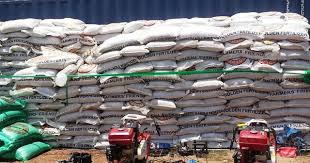Coconut milk and its health benefits
Coconut (Cocos nucifera) belongs
to the palm family (Arecaceae). Grown in abundance in Nigeria, Malaysia, Polynesia and
southern Asia, Spanish explorers named the plant cocos - meaning 'grinning face',
because of the three little eyes on the base.
 |
| Source: spoonuniversity.com |
Classed as a fruit and frequently
confused for being a nut, the coconut is actually a one-seeded drupe.
In
Sanskrit, the coconut palm is known as kalpa vriksha which means 'tree which gives all
that is necessary for living' because nearly all its parts are useful - the water,
milk, flesh, sugar and oil. Even the husks and leaves are used as materials in
furnishings and decoration.
Palm trees produce coconuts up to 13 times a year
and although it takes a year for the coconuts to mature, a fully blossomed tree
can produce between 60 and 180 coconuts in a single harvest.
Coconuts are highly nutritious
and rich in fibre, vitamins C, E, B1, B3, B5 and B6 and minerals including iron,
selenium, sodium, calcium, magnesium and phosphorous. Unlike cow's milk,
coconut milk is lactose free so can be used as a milk substitute by those with
lactose intolerance. It is a popular choice with vegans and makes a great base
for smoothies, milkshakes or as a dairy alternative in baking.
Coconuts are one of those foods
that oscillate between the 'good' food and 'bad' food camps. Coconut milk,
especially the lower fat variety, can be used in moderation (1-2 times per
week).
Creamed coconut
Creamed coconut and coconut milk
are made in a way surprisingly akin to their dairy counterparts. Coconut flesh
(the white part) is grated and soaked in hot water. The coconut cream rises to
the top and can be skimmed off. The remaining liquid is squeezed through a
cheesecloth to extract a white liquid that is coconut milk. By repeating this
process, the coconut milk becomes thinner. The thicker version is used for
desserts and rich sauces. Thin coconut milk is used for cooking curries and
soups.
Coconut water
Coconut milk is different to
coconut water. The latter has received a great deal of attention for its
perceived health benefits, and is an important treatment for acute diarrhoea in
the developing world. Research suggests the clear liquid has the same electrolyte
balance found in isotonic drinks, proving useful for rehydration or after long
periods of intensive exercise.
Coconuts contain significant amounts of fat,
but unlike other nuts, they provide fat that is mostly in the form of medium
chain saturated fatty acids (MCFAs) in particular, one called lauric acid.
Lauric acid is converted in the body into a highly beneficial compound called
monolaurin, an antiviral and antibacterial that destroys a wide variety of
disease causing organisms.
It is therefore now thought that consumption of
coconut milk may help protect the body from infections and viruses.
MCFAs are rapidly metabolised
into energy in the liver. It is thought that unlike other saturated fats, MCFAs
are used up more quickly by the body and are less likely to be stored as fat.
This does not exempt them from contributing to heart disease - they are still a
fat - but they have a different effect than saturated fats.
The link between excessive
consumption of dietary saturated fats and coronary heart disease (CHD) is well
established. Because of coconut milk's high content of saturated fatty acids,
it is still seen as a food that should be consumed in moderation.
How to select and store
If you are able to get fresh
coconut milk be aware that it goes bad very quickly and should be used the same
day as pressing. The canned variety is a useful store cupboard ingredient and
can be stored at room temperature for a long time. Be careful to check the use
by dates and look out for damage or dents in the cans. Once opened, transfer
the contents to a resealable container and refrigerate. Use within a few days.
The high oil content makes coconut quickly turn rancid if not stored under
proper conditions.
...DIY coconut milk (from
desiccated coconut)
Try making your own with just
water and unsweetened coconut flakes. Heat the water (make sure it doesn't
boil), add the flakes and blend. Pour through a colander to filter out the
coconut pulp, then squeeze through a cheese cloth to filter out the smaller
pieces of coconut. Use immediately or store in the fridge for 3-4 days.



Comments
Post a Comment